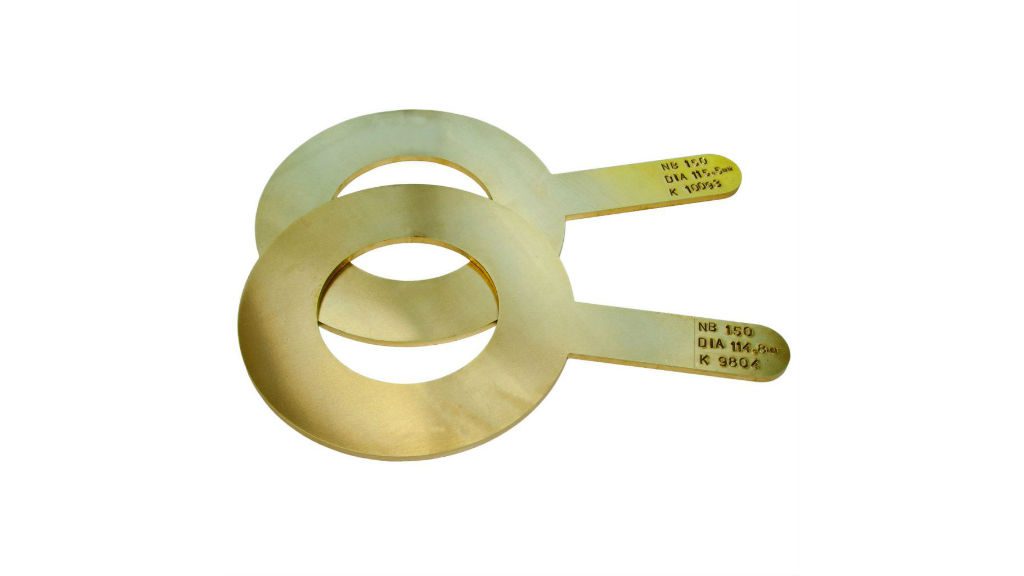An Orifice Plate is quite simply a thin plate with a hole in it (think of a ring doughnut), used to reduce the pressure or restrict the flow in a pipe system. It can be made of any non-corroding material; at Sale Engineering we generally use brass, although we have made special plates in a number of other alloys.
The plate is designed based on Bernoulli’s principle, which works on the concept that there is a direct relationship between the pressure and the velocity of the fluid; when the velocity of the fluid increases, its pressure decreases and vice versa.
How does an orifice plate control the fluid flow in a pipe system?
When fluid passes through the hole in the plate, its pressure increases slightly. The system is designed so that as the fluid converges to pass through the hole the pressure decreases and the velocity increases. This continues to build just past the orifice plate to the point of maximum convergence. After this, the flow expands, the velocity decreases again and the pressure rises.
The shape and manufacturing standards of orifice plates are defined by international standardisation publications like ASME, ISO and AGA. Orifice plates are commonly built with circular orifices and installed in-line with the pipe. Different levels of discharge are possible through various configurations. For example, the edges may be circular or pointed or the orifice can be installed eccentric to the pipe.
Our range of Orifice Plates are available in 3mm, 6mm or even 10mm thickness and designed for nominal bores from 50-200mm. Each plate is made to order using our (or your own) specific design criteria and the central orifice is laser cut to an accuracy of 0.1mm. The handles are stamped to your requirements with size, orifice size and K-factor.
For further details on our orifice plates please give us a call on 0161 428 1180.


Comments 1
What is the installation procedure of orfice plate in fire line.